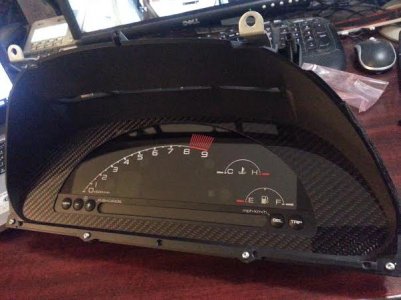These are good and important questions indeed. I don't think you have to worry to much though. This is my current understanding in more detail:
The input side of my converters is designed to be similar in many aspects to the NSX instrument cluster input side. Of course, anything is possible but I judge the probability for a catastrophic event to be very low during the normal product lifecycle. If you blow up my kit as a consequence of any compatibility issues rather than normal wear, I'll figure out what's wrong and get you a new corrected one for free, or get you a full refund. I consider such events to be part of the R&D budget. The electrical components of my converters have been specifically selected based on their automotive grading which means tighter manufacturing and performance tolerances and increased safety factor for failures. My converters are designed to provide thousands and thousands of running hours in the harsch electrical environment of a car. And should there be any failures leaving potentially dangerous short circuits, the fuses in your car would blow and potect your car from catching fire due to uncontrolled heat development. Most failures leave open circuits.
Any electronic system that gets designed for a vehicle and is not over-voltage protected and reverse-voltage protected is what I would consider a poor design. For instance, I have abused one of my developmental S2K clusters by short circuiting it, reversed polarity of wires, applied high voltage by accident in some cases etc. It's gone through some serious bashing and everything works perfectly. Quality stuff. Blown a couple of fuses in my car during development, that's all.
Just to clarify what wires are actually going from the ECU to the instrument cluster, I did some double checking of the NSX instrument cluster inputs (1991) and there are only three wires that goes directly to the ECU. The tacho signal, the speedo signal (indirectly via speed sensor) and the CEL.
The tacho input circuit in my converter is an over-voltage and over-current protected passive circuit, and is electrically insulated to all other sub-circuits. Any energy/signals going through this wire to my kit is generated by the ECU. The same goes for the speedo but the signal is generated by the speed sensor. The CEL is directly connected to the S2K instrument cluster and is electrically insulated to all other circuits in my converters and has the exact same design in the NSX- and the S2K instrument clusters.
If the tacho or speedo doesn't work with my kit and ANY other engine management systems the error resides not in my design but in the EMS, and in this case the original NSX tacho shouldn't work either. Same goes for speedo and the CEL. But for me to be absolutely sure and tell all customers that there are no compatibility or safety issues with standalone's, rather than say there shouldn't, I would have to test it.
Best regards,









